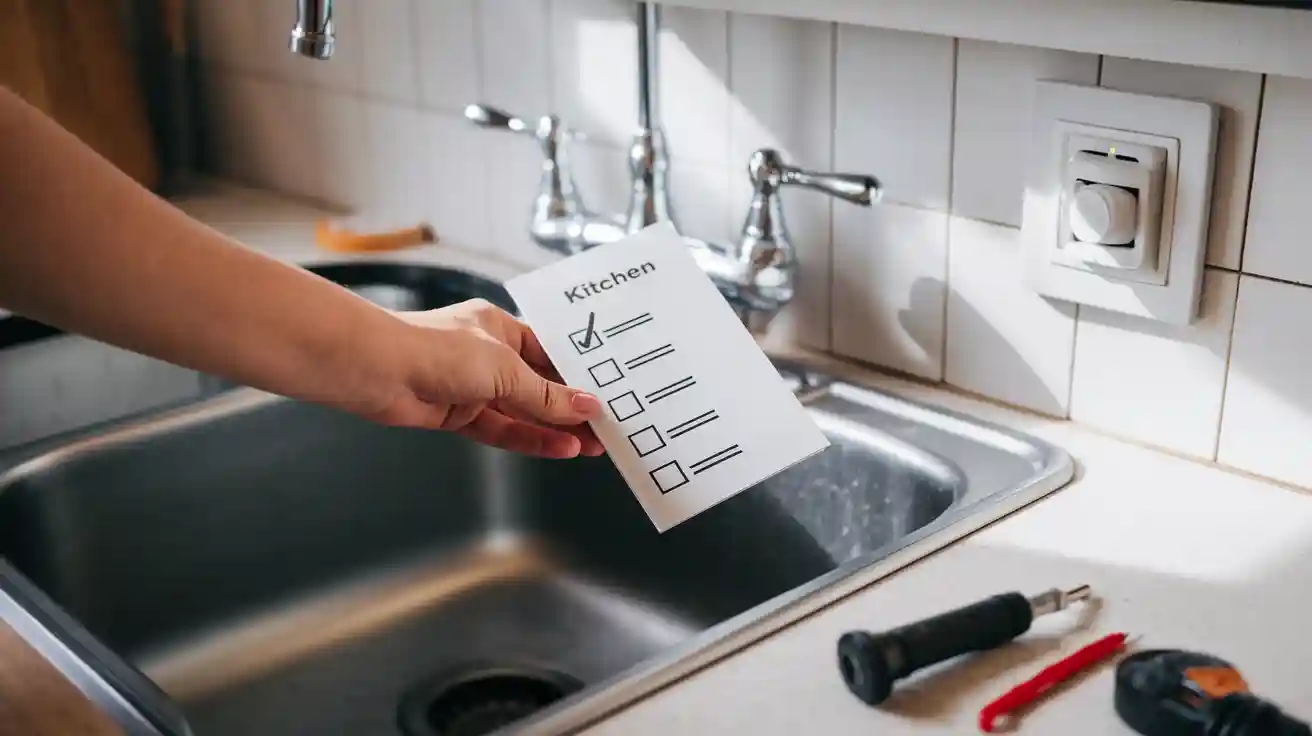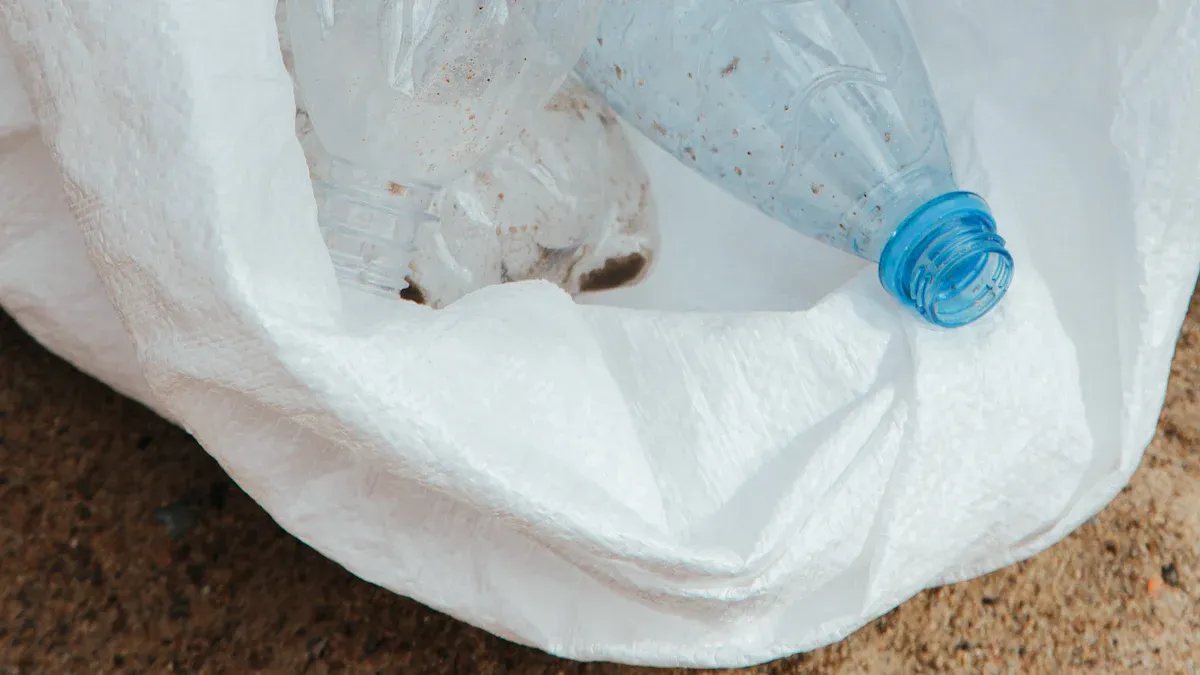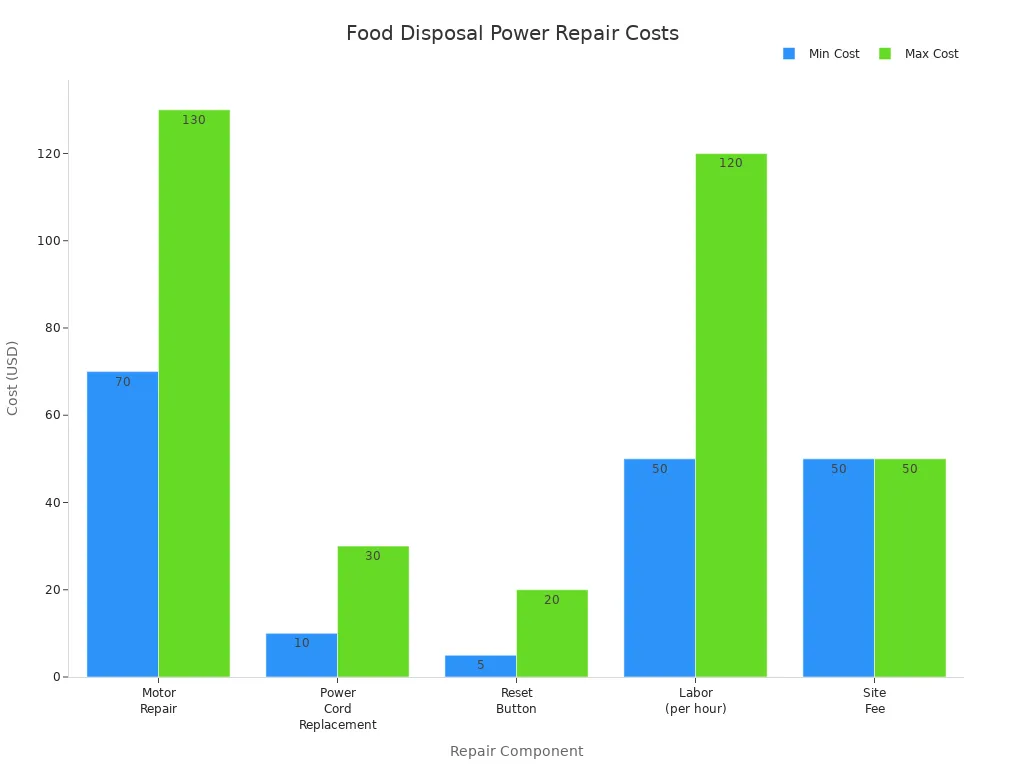
You notice your food disposal not turning on. Most of the time, a power issue causes this problem. You can check the plug and press the reset button. If you still see your food disposal not turning on, try the reset button again. These steps help you solve the issue.
- Check the plug first.
- Press the reset button if needed.
Food Disposal Not Turning On: Power Diagnostic Steps
Make Sure the Disposal Is Plugged In
You should start by checking if your food disposal is plugged in. Many people forget this simple step. If your food disposal not turning on, look under the sink and find the power cord. Make sure it is firmly connected to the outlet. Sometimes, vibrations or cleaning can loosen the plug. If the plug is secure and the unit still does not work, move to the next step.
Tip: Try plugging in another small appliance, like a lamp, to the same outlet. If it does not work, you may need to check the electricity or inspect the outlet for problems.
Find and Press the Reset Button
Most food disposals have a reset button on the bottom or side of the unit. If your food disposal not turning on, press the reset button. The reset button acts as an internal circuit breaker. If the disposal overheats or jams, the reset button pops out. Gently press it back in. If it does not stay in, wait ten minutes and try again. Sometimes, you need to press the reset button more than once if the unit overheats.
Steps to reset your food disposal:
- Turn off the disposal using the wall switch or unplug it.
- Locate the reset button, usually red, on the bottom of the unit.
- Press the reset button until it clicks and stays in.
- Wait ten minutes if the button pops out again.
- Restore power and test the disposal.
- If the disposal still does not work, repeat the reset process.
Note: If the reset button keeps popping out, there may be a deeper electrical or mechanical problem.
Check the Wall Switch and Outlet
If pressing the reset button does not solve the issue, check the wall switch and outlet. Flick the switch that controls the disposal. If nothing happens, test the outlet by plugging in another device. Sometimes, the switch or outlet has loose connections or fails due to age. Frequent tripping or random shutoffs can signal a problem with the switch or outlet.
- Signs of a faulty switch or outlet:
- Disposal does not turn on when you flip the switch.
- Disposal shuts off randomly during use.
- Circuit breaker trips when you use the disposal.
- Loose wires inside the switch or outlet box.
If you find any of these signs, you may need to replace the switch or outlet.
Inspect the Circuit Breaker or GFCI
Garbage disposals often connect to a circuit breaker or GFCI outlet. If your food disposal not turning on, go to your home’s electrical panel. Look for a tripped breaker or a GFCI outlet with a reset button. Motor-based appliances like disposals can trip GFCI outlets, especially as they age. Press the reset button on the GFCI outlet if it has tripped. If the breaker is off, flip it back on.
Safety Alert: Always turn off power before inspecting electrical panels or outlets.
If the breaker or GFCI keeps tripping, the disposal may have an electrical fault. Overuse or lack of maintenance can cause these problems. If you cannot restore power, call a professional.
Examine Visible Wiring Connections
If you have checked the plug, pressed the reset button, and inspected the switch, outlet, and breaker, look at the wiring. Turn off power at the circuit breaker before you begin. Remove the cover plate on the bottom of the disposal. Use a voltage tester to make sure no electricity flows to the unit.
- Turn off power at the breaker.
- Use a voltage tester to confirm power is off.
- Remove the cover plate from the disposal.
- Check for loose, damaged, or disconnected wires.
- Make sure black wires connect to black, white to white, and green or bare wire to ground.
- Secure wires with wire nuts and clamp the power cord.
- Replace the cover plate and restore power.
Always follow local electrical codes. If you see exposed wires or unsafe splices, call an electrician.
Common wiring mistakes include improper splicing, lack of grounding, and missing junction boxes. These errors can cause breaker trips, shocks, or fire hazards. If you feel unsure about wiring, take photos and ask a professional for help.
Troubleshooting and Steps to Fix a Jammed Garbage Disposal

Disposal Is Completely Silent
When your garbage disposal is completely silent, you likely have a power issue. First, check if the unit is plugged in and the outlet works. Try pressing the reset button on the bottom of the disposal. If the disposal still does not turn on, check your circuit breaker or fuse box. Sometimes, a blown fuse or tripped breaker causes silence. If these steps do not restore power, you may have a mechanical problem inside the unit. Always unplug the disposal before you inspect it. Never put your hands inside the unit. Use tongs or pliers to remove any visible debris.
Disposal Hums but Won’t Run
A humming sound means the motor is getting power, but the blades cannot spin. This often happens when something jams the blades. Turn off the power at the breaker. Shine a flashlight into the disposal and look for objects like bones or utensils. Remove them with tongs or pliers. Insert a 1/4-inch Allen wrench into the hex hole at the bottom and turn it back and forth to free the jam. Press the reset button, restore power, and test the unit. If the humming continues, the motor may be overheating or faulty.
Circuit Breaker or GFCI Keeps Tripping
Frequent tripping of the breaker or GFCI outlet signals a serious electrical or mechanical problem. This can happen if the disposal is jammed or the wiring is faulty. Repeated trips can shorten the lifespan of your disposal. If you notice sparks, burning smells, or the unit shuts off unexpectedly, stop using it and call a professional. Ignoring these signs of a jammed garbage disposal can lead to more damage.
Burning Smell or Signs of Electrical Damage
A burning smell from your disposal is a warning sign. Turn off the unit right away. Check for jams and remove debris with tools, not your hands. Run cold water to flush out any buildup. If the smell does not go away or you see smoke, the motor or wiring may be damaged. A malfunctioning garbage disposal with electrical damage often needs professional repair or replacement. Always follow the steps to fix a jammed garbage disposal safely to prevent further issues.
Most food disposal power problems have simple solutions you can try at home. If you notice burning smells, repeated power loss, or leaks, call a professional.
- Sharp blades and electrical parts can cause injury.
- DIY repairs may void your warranty or increase costs.
- Professionals use proper tools and safety equipment.

Always disconnect power before troubleshooting. Never put your hands inside the disposal.
FAQ
What should you do if your garbage disposal makes no noise at all?
You should check the electricity first. Make sure the unit is plugged in. If it stays silent, you may have a malfunctioning garbage disposal.
How can you tell if your disposal is jammed?
You may notice humming, slow draining, or blades that do not spin. These are common signs of a jammed garbage disposal.
What are the steps to fix a jammed garbage disposal safely?
Turn off the power. Use tongs to remove debris. Insert an Allen wrench to turn the blades. Follow all steps to fix a jammed garbage disposal carefully.


